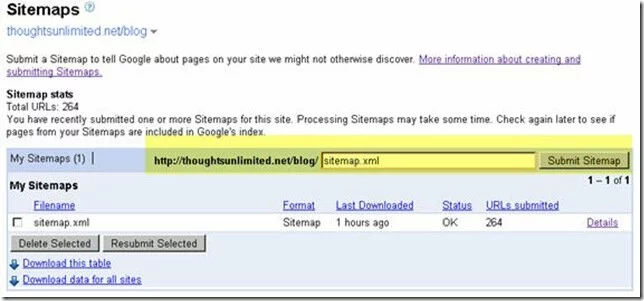Everything you wanted to know about XML Sitemaps [SEO Tips]
What is a Sitemap?
Sitemaps are an easy way to tell search engines about pages on the site, that are available for crawling. There are two types of sitemaps:
- HTML Sitemap – Listing of the pages of your site, so that the users can find relevant and important information faster
- XML Sitemap – List of URLs for a site, along with additional metadata that are particularly useful for Search Engines
In short, XML Sitemap is a list of URLs on your website and a way to make sure that the Search Engines knows everything about them.
Why does your site need a XML Sitemap?
As said earlier, a Sitemap makes it easy for Search Engines to understand your site. This translates to your site featuring in relevant search queries, thus increasing your site traffic. In short, your site needs a Sitemap to increase the traffic.
Sitemaps are particularly helpful if:
- Your site has dynamic content, like Blogs that have new content added almost everyday
- Your site’s pages are not easily discovered by search engines (e.g., your site has lots of AJAX and Flash pages)
- Your site is very new and has few incoming links into it
- Your site has lots of archived pages that are not really linked with each other
To know more about Sitemaps and their need, refer to Google Sitemaps help.
How does a XML Sitemap look like?
If you are technically savvy and interested to know how a XML Sitemap looks like – following is an example:
http://website.com 1.00 daily
XML Sitemap has many such
Enough Theory. How do I create a XML Sitemap for my site?
Command line Sitemap Generator
Google has a Python script, that creates a Sitemap using the Sitemap Protocol. But to use this script, you must have a command line access to your web server and Python 2.2 installed. In a few cases, this is not readily available and the command line sitemap generator may not be used.
Refer to the Google Sitemap Generator page on instructions to setup and use this tool.
Web based Sitemap Generator
A lot of web based XML Sitemap generators exist, that takes in the Homepage URL of your site and gives you the “sitemap.xml” file. You will have to upload this file to the root of your Website. For example, if your Hompage URL is https://thoughtsunlimited.net, then the “sitemap.xml” file must be copied there.
XML Sitemaps is one such site, that takes in your Website URL, some optional parameters and crawls your website to generate a complete XML Sitemap. But the downside with the free service is that the number of URLs are limited to 500. If the number of URLs on your website exceed 500, then the free service may give you only the partial XML Sitemap. However, you always have an option to use the “Paid version” to get the complete XML Sitemap.
Google XML Sitemap Plugin for Wordpress
If you use Wordpress as the CMS, then the help is right there in the form of a WP Plugin. You can download the Google XML Sitemaps plugin here [ZIP file].
Plugin Homepage has the complete set of instructions on how to install and start using the plugin. This plugin has an elaborate administration page, but the default options must hold good for most the WP sites. Also, this plugin takes care of updating the XML Sitemap whenever posts are added, edited or removed.
XML Sitemap is created. Now What?
If you use any of the manual methods to create the XML sitemap, then the “sitemap.xml” that is generated must be uploaded to your website’s root, using your favorite FTP tool. Once this is done, the file must be submitted to the Search Engine webmaster tool for crawling.
First you must setup your website with Google Webmaster, so that it can be considered for crawling. Google Webmaster Central has sufficient resources to get started with.
Once your website is configured with Google Webmaster, navigate to the ‘Sitemaps’ area and submit your “sitemap.xml” file.
Last word
So, a XML Sitemap helps your site gain better visibility with the Search engines and increases the traffic. This is a must have SEO enhancement for every webmaster, who wishes to popularize his/her website.





Add New Comment
Thanks. Your comment is awaiting approval by a moderator.
Do you already have an account? Log in and claim this comment.
Add New Comment
Trackbacks
(Trackback URL)